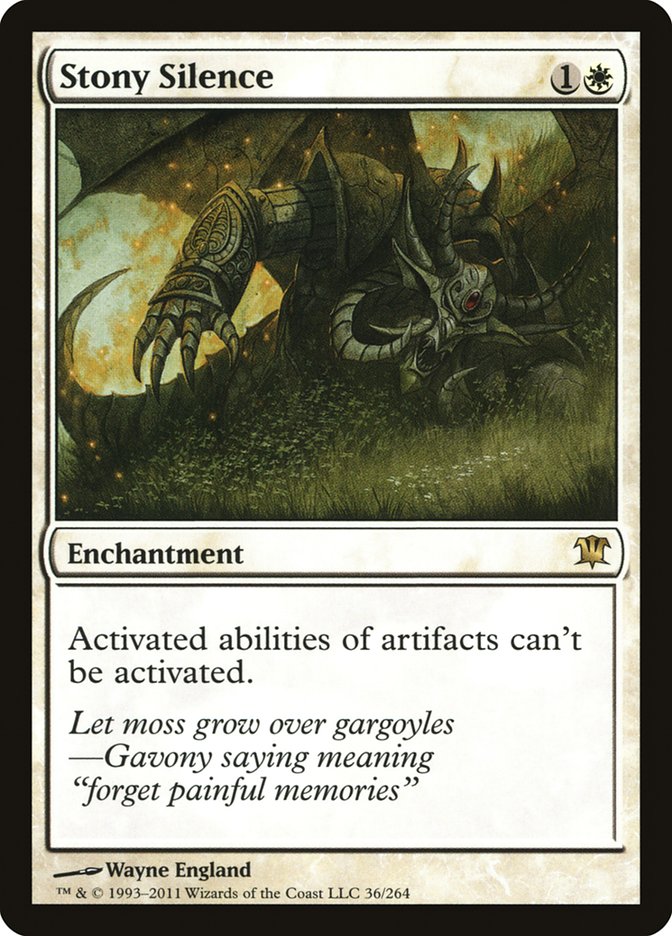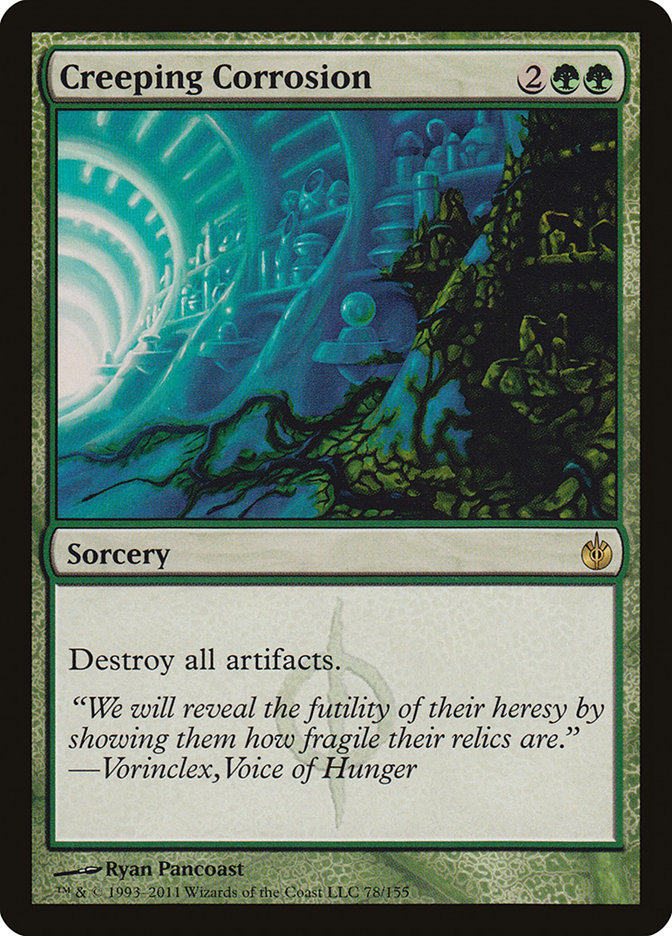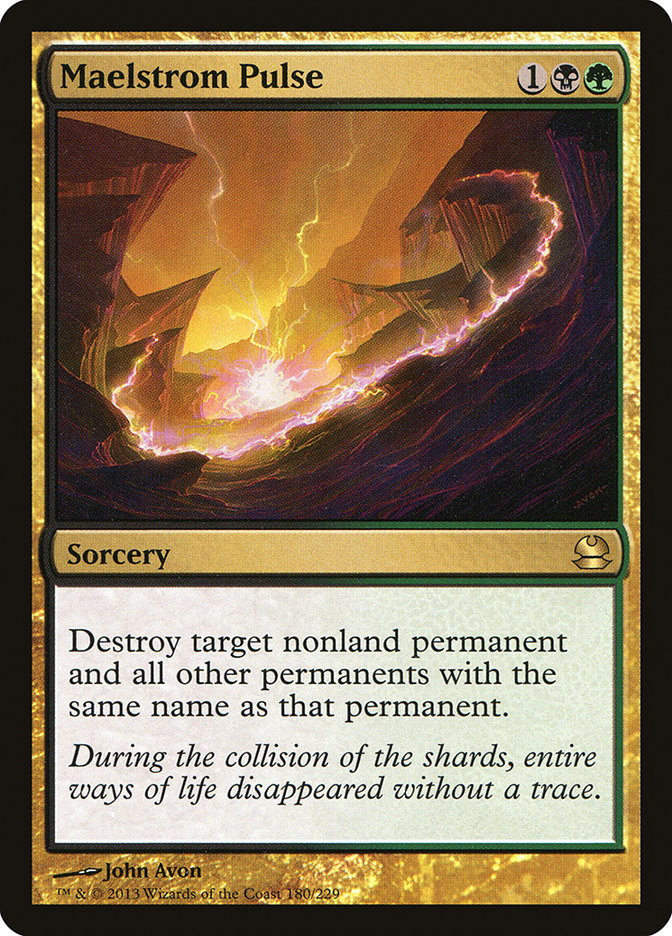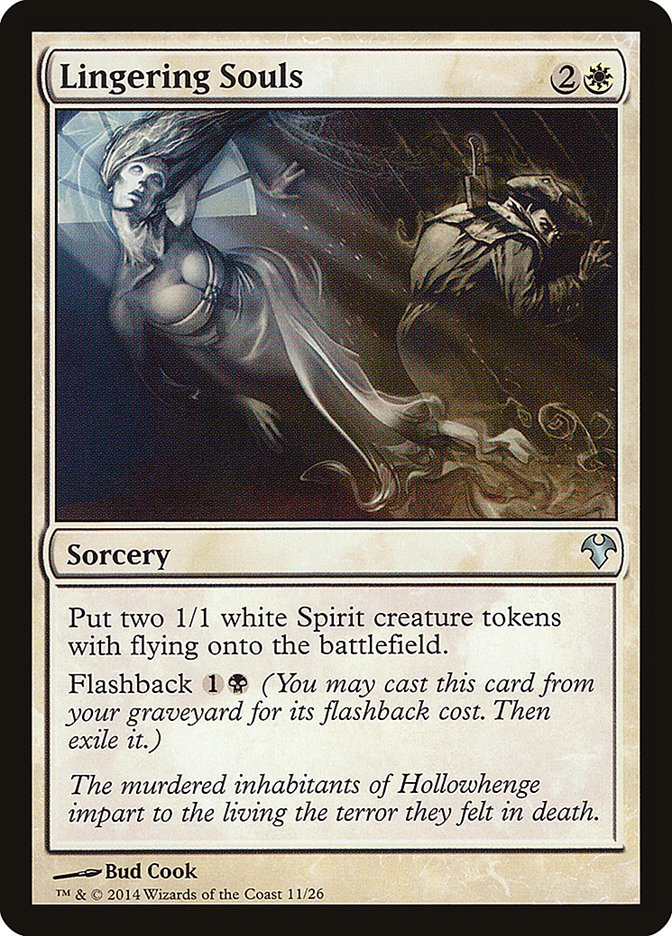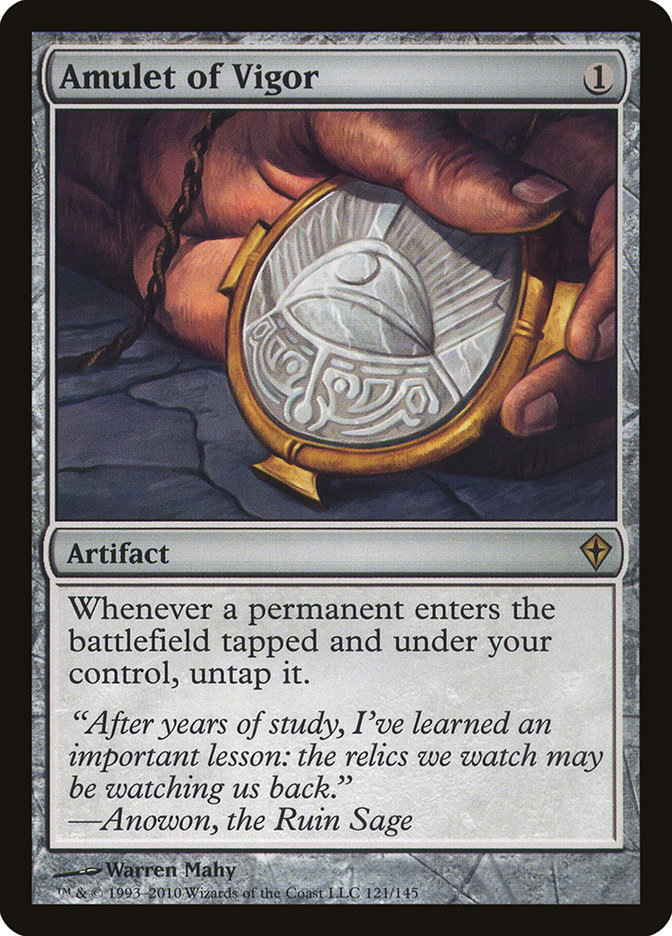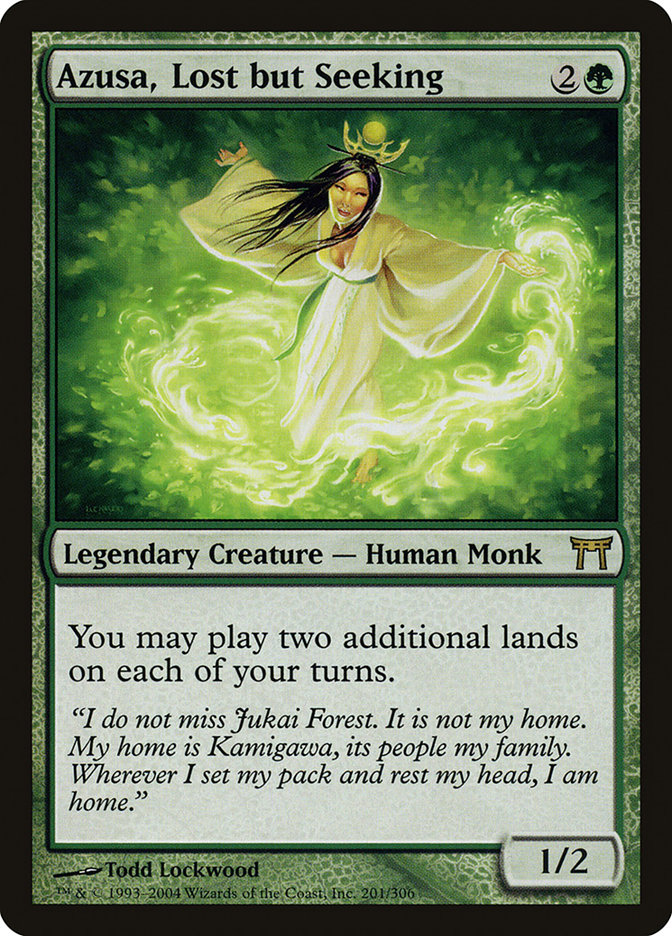“What do I play in Modern?”
That’s a question I’ve frequently asked myself and is one of the questions that I get asked the most. It’s such an easy question, but I need a lot of background to answer it effectively. What do you have experience with? What are you comfortable with? What does your metagame look like? I’m never going to be able to answer the question truthfully for you.
I can help, though.
Selecting Your Deck
Realistically, you should probably aim at picking a deck and mastering it, maybe switching if the metagame becomes a tad too hostile. For those reasons, it’s tough to be an Affinity player, because there are probably going to be six months out of the year where it’s very difficult for you to win a post-sideboard game.
Then again, Modern is the exact type of format where knowledge of your deck, matchups, and how to sideboard is going to carry you further than having a deck that happens to be under the radar. Each deck in the format is so good that your edges are small unless you absolutely nail it.
Another avenue you can explore is switching decks week to week, trying to find something that breaks the format, at least for that particular week. Obviously that comes with its own set of issues, as not everyone has a massive Modern collection. Having friends that have their own collections, where you can borrow odds and ends, if not the entire deck, is probably the best route to go down. Unfortunately, it’s not something I see people take advantage of.
While there is plenty of variety available in Modern, I rarely see many people get the full experience out of it because they only have one deck. The next time you go to a local Modern event, I propose switching decks with one of your friends. If you have a big group, gather up all the decks and assign them randomly. I guarantee it will be more fun than playing the same old deck every week.
Anyway, Modern has too many decks for you to profitably metagame for, at least in a traditional sense. Instead, you need to look at the format in a different way.
By breaking up the decks into groups, you can get an idea of what deck you should choose based on what that deck is naturally favored against. That should likely influence your decision on what to play more so than what sideboard cards you get. However, it’s still less important than what sideboard cards other people could bring to the table against you.
There are sixteen decks that I consider to be viable in Modern right now, and they can all be lumped into four categories. Questions like “How good is Lightning Bolt right now?” are much easier to answer once you break everything down into groups. Ari Lax did a good job of this sort of categorization, but I think I look at it a bit differently.
Naturally, some of these decks overlap.
The “Kill You with Creatures” Decks:
Infect
U/R Battle Rage
Affinity
Burn
Dredge
Bant Eldrazi
The “I Start From Behind” Decks:
Jund
Abzan
Jeskai Control
Tron
Grixis Control
The “Kill You, at Least in Game 1” Decks:
Affinity
Dredge
The “Pure Control” Decks:
Lantern Control
Tron
W/R Prison
Looking at those groups, it’s easy to see that creature decks are by far the most popular type of decks in Modern. You don’t need to play a pile of interaction to beat them, but it does help. Decks like Jund and Grixis succeed because of how well they usually do against those strategies.
Creatures (12)
Planeswalkers (4)
Lands (23)
Spells (21)

The other option is (mostly) ignoring them and hope you win the race. Affinity is a nice choice because not only do you win most races, but you can build a bigger battlefield than most opponents and you have blockers for things like Inkmoth Nexus and Death’s Shadow.
Creatures (19)
Lands (17)
Spells (24)

Decks like Scapeshift, Ad Nauseam, and Tron tend to be poor against decks with lots of one-drops, so I’d probably stay away from those right now. Bant Eldrazi is in a similar situation because of how slow it can be. In most formats, being the slightly bigger creature deck will give you an edge. In Modern, it tends to be the opposite because of how the smaller creature decks are constructed. They know they can’t win the late-game, so they have things like Apostle’s Blessing and Temur Battle Rage to get through those last points of damage, even through big blockers.
Once you narrow it down to “Creature decks are the best performers right now,” the question becomes “How do I break this paradigm?” Obviously you can try to kill everything, but another plan is playing a creature deck that tends to be favored against the decks that people play. If you’re not losing to specific sideboard cards or those cards aren’t widely played, you can choose your deck based on that.
Building Your Sideboard
So you’ve got your deck. That’s Step 1. The second and arguably more important step is figuring out how you’re going to combat the sixteen decks in the format.
I don’t think I’m known for my Modern prowess, but oddly enough, it’s been the format I’ve performed the best in this year. While my deck selection is typically poor (since I err on the side of playing decks that I’ll enjoy playing rather than picking a deck that’s actually good), my sideboarding tends to carry me.
One of my best skills is hedging while sideboarding. That means if I can consolidate a Disenchant and a Slaughter Pact into a Maelstrom Pulse, I almost always will. If you want a sweeper for Lingering Souls, Maelstrom Pulse could give you that slot too. Engineered Explosives is also quite good at doing that job.
When deciding on which sideboard cards to play, and what amount, it’s worth looking at how much use you can get out of them. For example, if Dredge were the only graveyard-based deck in Modern, you would get little value out of devoting three slots of graveyard hate. Instead, you should look for ways to get broader use out of your cards.
If you don’t care about your own graveyard, you could play something like a singleton Rest in Peace as part of your graveyard to package to hose Jund. You wouldn’t want to board in Ravenous Trap, Leyline of the Void, or multiple Rest in Peaces against Jund, but one is totally reasonable.
Anger of the Gods is a card that isn’t lights-out against anyone, but you can cover a lot of your bases with it. I like it against Burn (on the play is better, but on the draw is fine), Infect (typically only on the draw, and in matchups where they are likely to flood the battlefield in an attempt to beat spot removal), Affinity (in very small numbers), and Dredge (where it’s effectively graveyard hate).
If there are some Abzan Company or Bant Company decks with Voice of Resurgences around, even better. Elves happens to be popular this weekend? Great!
Next-level hedging is sliding some sideboard cards (or cards that could be sideboard cards) into your maindeck. While you should probably never maindeck Ancient Grudge, you can certainly play something like Anafenza, the Foremost. Many matchups come down to how many relevant cards you have against your opponent, so getting those extra edges is huge over a long tournament.
By hedging in these ways, you will often cover yourself against a wider portion of the field. In Modern, you never know when you’re going to run up against Krark-Clan Ironworks, Enduring Ideal, or Elves. Hedging typically gives you a better shot at surviving when you get paired against decks that just outside of the format too.
Lands (17)
Spells (43)
- 4 Krark-Clan Ironworks
- 4 Reshape
- 4 Thoughtcast
- 4 Chromatic Sphere
- 1 Mind Stone
- 4 Terrarion
- 4 Chromatic Star
- 3 Lotus Bloom
- 1 Banefire
- 3 Open the Vaults
- 2 Mox Opal
- 4 Ichor Wellspring
- 4 Faith's Reward
- 1 Codex Shredder
Sideboard

Normal sideboarding advice applies here too. Don’t over-sideboard for a specific matchup at the expense of others, and make sure you don’t have eight cards to bring in for a certain matchup with only four you want to take out.
For sideboarding, I also group together Modern decks, albeit a little differently.
Creature-Based
Infect
U/R Battle Rage
Bant Eldrazi
Jund
Abzan
Burn
Creature removal isn’t the end-all, be-all in these matchups. A pile of Lightning Bolts will take you far, but eventually they’ll find a way to beat you. Infect, Death’s Shadow, and U/R Battle Rage will sculpt the perfect hand full of protection, Jund will tear your hand apart or beat you with a planeswalker, Bant Eldrazi will find Drowner of Hope, and Burn will, uh, burn you.
Instead, use your removal spells as a means to slow them down and buy you time. Think of them like discard spells against combo decks. It’s very unlikely that you actually bury them under a pile of removal. Disrupt them, put a clock on them, and do what your deck does.
One of the biggest ways people spew slots is by sideboarding in slightly better removal and taking out their clunkier removal. While that does give you percentage points in the matchup, it’s small, and those slots could have probably been spent better.
Artifact-Based
Affinity
Lantern Control
Outside of Shatterstorm, where you’re blowing up their entire battlefield and typically some of their mana sources, you should treat artifact removal the same as creature removal. It’s good, but there are diminishing returns.
Graveyard-Based
Dredge
(Jund)
(Grixis)
I hesitate to call Jund or Grixis graveyard-based, but certain graveyard hate is very strong against them. Rest in Peace will cripple Tarmogoyf, Scavenging Ooze, Grim Flayer, Snapcaster Mage, any delve card, and Jace, Vryn’s Prodigy. Neutering your opponent’s deck is going to help you win, either by reducing their ability to stabilize behind a Tarmogoyf or a flashbacked Lightning Bolt or by making their main win conditions useless.
These decks can still win through a Rest in Peace, either with Abrupt Decay, Cryptic Command, or beating down with smaller creatures. Against Dredge, keeping a Rest in Peace on the battlefield means you are 95% to win the game. Against Jund or Grixis, it simply increases your chances of winning by a small margin.
You can use it as a disruptive tool, but don’t dilute your deck by adding too many of those cards and don’t keep hands based on the fact that you have that card.
Spell-Based
Tron
Grixis Control
Jeskai Control
W/R Prison
Burn
There aren’t many ways to interact favorably against spell-based (or stack-based) decks. If you have counterspells, maybe you can stop their Karn Liberated or Scapeshift from resolving. Similarly to the creature decks, these decks have ways of beating counterspells, so you can’t rely on them. Use them as a tool to stop them doing their thing and buy you enough time to do yours. If you can’t, you need to hope that something like Blood Moon beats Tron or Ancient Grudge stops Ad Nauseam from casting its namesake.
Tron and W/R Prison are labeled as “spell-based” because that’s basically the only time a normal deck will get to interact with their powerful cards. Planeswalkers and enchantments are particularly difficult to remove for most Modern decks. Similarly, not many Modern decks can handle an onslaught of burn spells.
Spell-based control decks usually have a tough time with noncreature permanents. If you can slip a Karn Liberated or weirdo enchantment onto the battlefield, they’re probably not going to win. I play a lot of those control decks, and my record against decks like Tron and Scapeshift is horrendous.
Some Bonus Modern Notes
It’s only a matter of time before Smuggler’s Copter takes over.
I’ve seen it pop up in Faeries, W/B Tokens, and Abzan Aggro, and it’s looked great in each of those decks. Now, those decks aren’t exactly Tier 1, but they are on the fringe. It makes me wonder what other creature decks should be utilizing the Copter.
Clearly it’s at home in Affinity, but Affinity is more of a combo deck than a fair creature deck. Smuggler’s Copter seems too slow for that particular deck. Not being a creature for Collected Company is sad, but if you don’t want to play many spells, you could try it. Would it be good in Merfolk?
Of these, W/B Tokens is the one deck I think might be legitimately good. You know what else is good?
This deck has been doing quite well recently, mostly for the same reason Tom Ross won an Open with G/W Tron. There is a complete lack of hate for lands at the moment. While that makes the coast kind of clear for Tron, Scapeshift, and Amulet, those decks are still at a natural disadvantage against the rest of the format. Sure, nobody has hate for those decks, but that doesn’t mean they can beat a turn 1 Glistener Elf.
Amulet is one of the few “big mana” decks that has enough raw power to compete with the format. You’re still at a disadvantage, but your turn 3 Primeval Titan draws are virtual kills against a lot of decks.
Smuggler’s Copter and Amulet of Vigor are both real.


